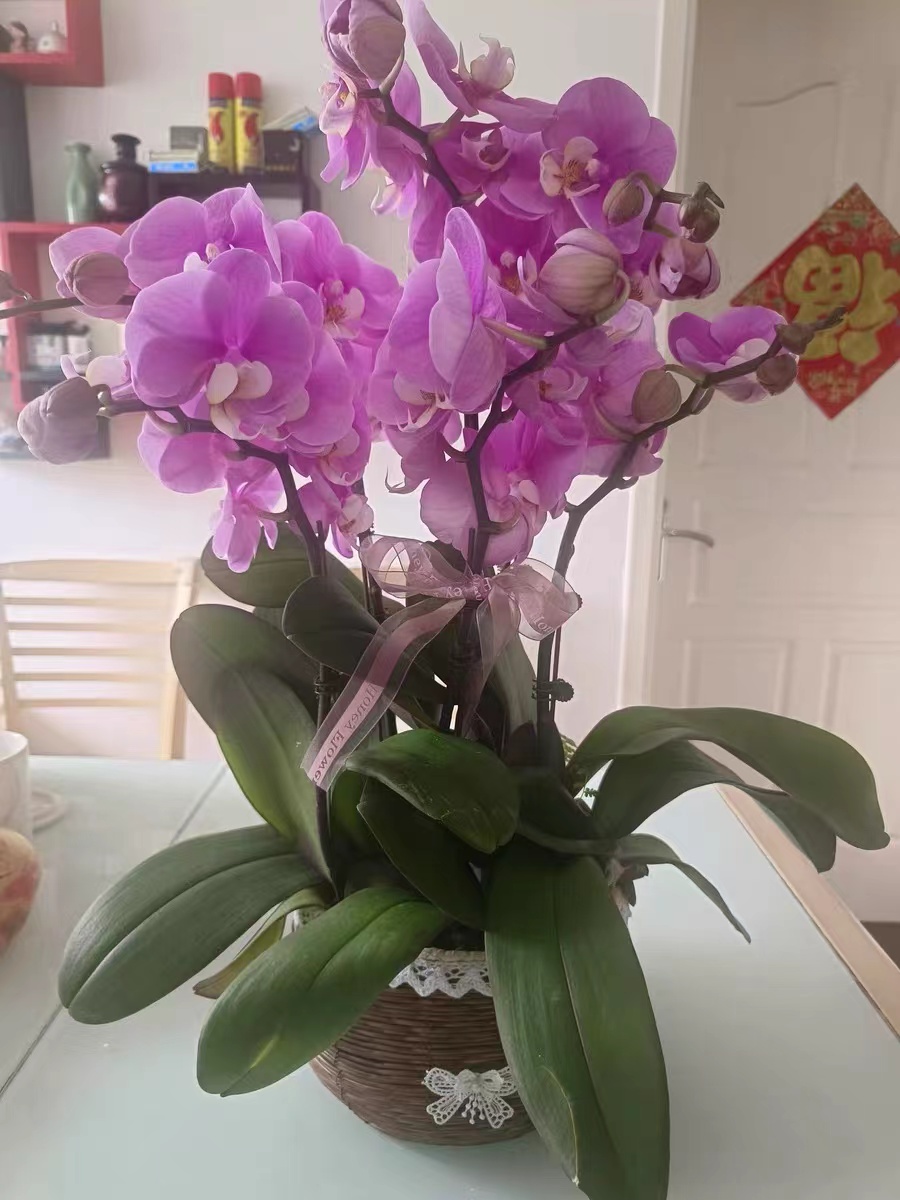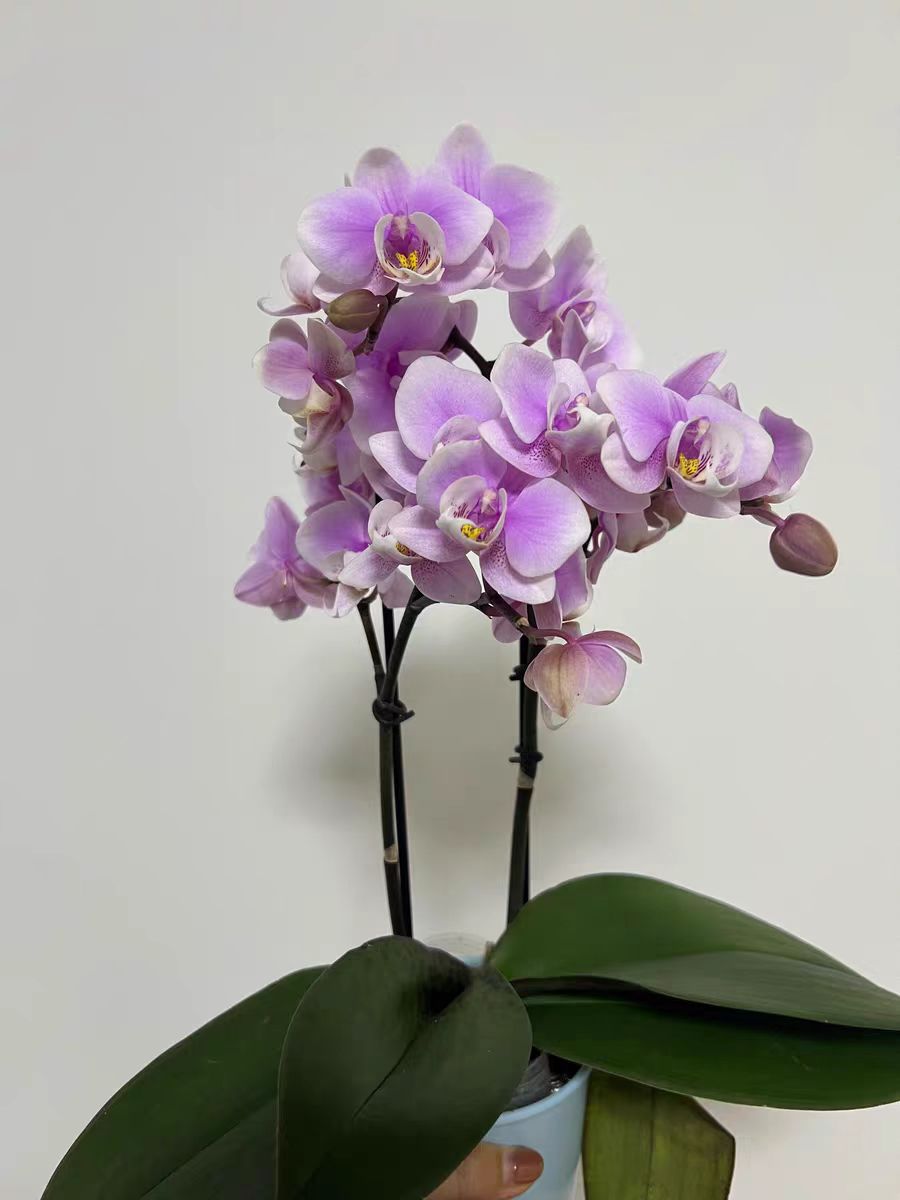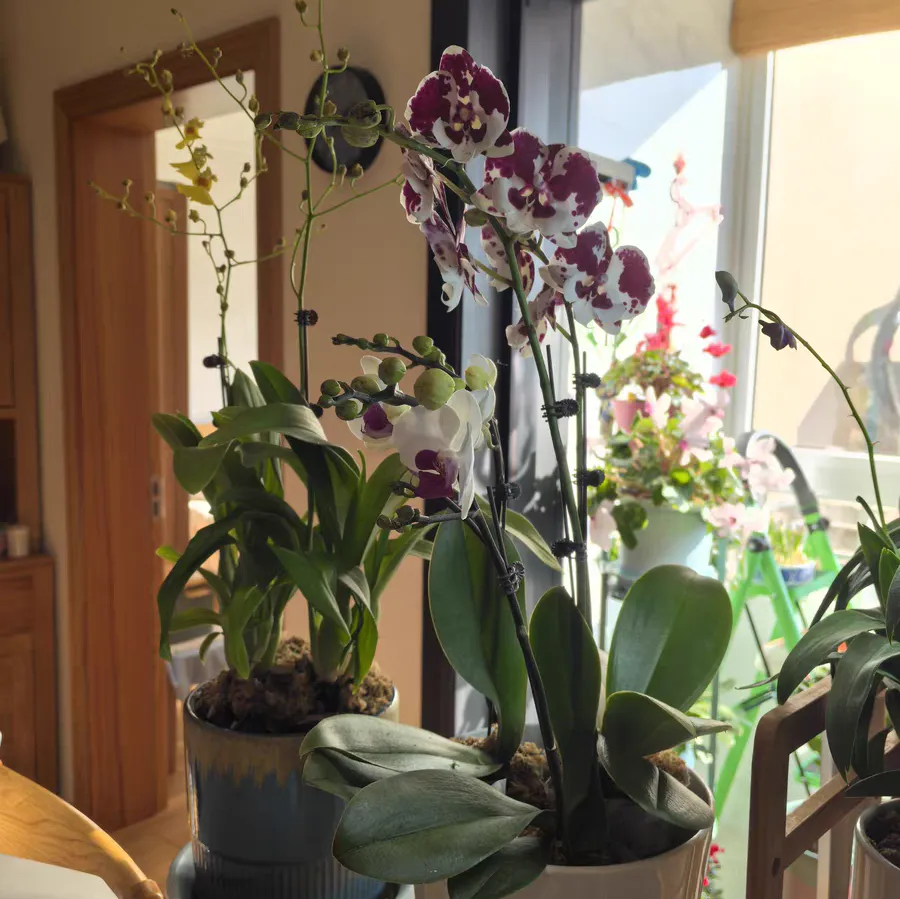Phalaenopsis Anna is usually considered a large-flowered variety. Its flowers are huge and delicate, with broad petals and fine texture. Its flower colors are rich and diverse, including pure white, romantic pink, noble purple, etc. Each color can bring different visual enjoyment.
So, how can we cultivate Phalaenopsis Anna well? The following are some key maintenance points.
First of all, a suitable environment is the basis for cultivating Phalaenopsis Anna. Phalaenopsis Anna likes a warm, humid and well-ventilated environment. In terms of temperature, the most suitable growth temperature is between 18°C and 28°C. In winter, pay attention to keeping warm to avoid the plant being frozen due to too low temperature; in summer, when it is hot, appropriate cooling measures should be taken, such as strengthening ventilation and spraying water. Humidity is also crucial for Phalaenopsis Anna. It likes a relatively high humidity. Generally speaking, the air humidity should be maintained at about 60% to 80%. Methods such as placing a water basin around and using a humidifier can be used to increase air humidity. At the same time, good ventilation can prevent the breeding of pests and diseases and ensure the healthy growth of the plant.
Secondly, correct lighting is the key to the healthy growth of Phalaenopsis Anna. Phalaenopsis Anna likes scattered light and avoids direct strong light. It can be placed in a bright place without direct sunlight, such as by the window or in the corner of the balcony. If the light is too strong, the leaves will turn yellow and the flowers will fade; if the light is insufficient, it will affect the growth and flowering of the plant. At different growth stages, Phalaenopsis Anna also has different needs for light. During the growth period, relatively more light is needed to promote photosynthesis; during the flowering period, the light can be appropriately reduced to prolong the flowering period.
Furthermore, reasonable watering and fertilization are important links in cultivating Phalaenopsis Anna. Phalaenopsis Anna has special needs for water. It likes to be moist but cannot be waterlogged. When watering, follow the principle of "water when dry", that is, water when the soil surface is dry. Water thoroughly, but do not let water accumulate at the bottom of the pot. In winter, due to the low temperature and slow growth of the plant, the frequency of watering can be appropriately reduced; in summer, when the water evaporates quickly, the frequency of watering can be appropriately increased. In terms of fertilization, Phalaenopsis Anna needs an appropriate amount of fertilizer to maintain growth and flowering. You can choose special Phalaenopsis fertilizer and fertilize according to the instructions. Apply a thin liquid fertilizer every two weeks or so during the growth period; during the flowering period, the proportion of phosphorus and potassium fertilizers can be appropriately increased to promote the opening of flowers and prolong the flowering period.
Finally, the prevention and control of pests and diseases cannot be ignored. Phalaenopsis Anna is easily attacked by pests such as aphids, red spiders, scale insects, etc., and affected by diseases such as anthracnose and soft rot. Regularly check the leaves, flowers and roots of the plant. If pests and diseases are found, timely measures should be taken to prevent and control them. Pesticides can be sprayed, but pay attention to the concentration and usage method to avoid harming the plant. Biological control methods such as introducing natural enemies can also be adopted.
Phalaenopsis Anna is stunning with its beauty of large flowers. To cultivate it well, it is necessary to provide it with a suitable environment, correct lighting, reasonable watering and fertilization, and effective pest and disease control.
How to cultivate Phalaenopsis Anna?

Share with
Tagged in :




Leave a Reply